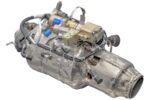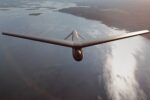Australian startup Blackstar Space is preparing to enter the competitive small launch market with its Kinetica 2 rocket—a solid-fueled orbital vehicle slated for a maiden flight in late 2025. Designed for rapid-response missions and hypersonic test support, the Kinetica 2 aims to provide sovereign access to space from Australian soil. With a focus on simplicity and speed over reusability or complex staging, the system reflects evolving defense and commercial needs for agile space capabilities.
Blackstar Space and Australia’s Sovereign Launch Ambitions
Blackstar Space is part of a growing cohort of Australian aerospace firms seeking to establish indigenous launch capabilities. While the nation has historically relied on foreign providers for orbital access, recent government initiatives—including the Australian Civil Space Strategy (2019–2028)—have prioritized sovereign launch infrastructure as a strategic imperative.
The Kinetica program aligns with this vision by offering a domestically built and operated solution tailored for both civil and defense applications. Blackstar has partnered with Queensland-based Hypersonix Launch Systems—known for its scramjet-powered platforms—to support hypersonic flight testing using the Kinetica as a booster stage.
Australia’s Woomera Test Range and other potential inland sites are under consideration as launch locations. The company has also indicated interest in establishing mobile or containerized launch pads to enable flexible deployment across remote areas—an approach that mirrors U.S. efforts in tactically responsive space operations.
Kinetica 2 Design Overview: Solid Propulsion Simplicity
The Kinetica 2 is a three-stage solid-propellant rocket designed to deliver payloads of up to 300 kg into low Earth orbit (LEO). Its propulsion architecture emphasizes reliability and rapid readiness over reusability or liquid-fueled complexity:
- Stage Configuration: Three solid stages using proprietary composite propellants optimized for high thrust-to-weight ratios.
- Payload Capacity: Up to ~300 kg to LEO; suitable for smallsats or clustered CubeSats.
- Launch Prep Time: Designed for minimal ground infrastructure with rapid integration timelines (~days rather than weeks).
- Dimensions: Estimated total length ~12–15 meters; diameter ~1 meter (based on similar-class vehicles).
This approach echoes legacy systems like the U.S. Pegasus XL or India’s PSLV-QL first stages but updated with modern materials and avionics. Solid propulsion offers advantages in storability, ruggedness, and quick reaction time—key features sought by militaries pursuing responsive space access (e.g., Tactically Responsive Launch-1 by the U.S. Space Force).
Differentiators: Rapid Response & Hypersonic Test Support
Kinetica’s primary differentiator lies in its dual-role design philosophy—serving both as an orbital launcher and as a testbed booster for hypersonic systems. Its compatibility with Hypersonix’s DART AE scramjet demonstrator positions it as an enabler of Australia’s emerging hypersonic R&D ecosystem.
This dual utility supports two strategic use cases:
- Tactical Satellite Launch: Rapidly deploy ISR or comms payloads following satellite loss or during crisis scenarios.
- Hypersonic Flight Testing: Serve as first-stage booster for air-breathing vehicles operating at Mach 5+ regimes.
The ability to switch between these roles without extensive reconfiguration enhances operational flexibility—a key attribute echoed in U.S., UK, and NATO discussions around “launch-on-demand” capabilities in contested environments.
Status Update: Ground Testing Milestones Ahead of Flight
Kinetica’s development roadmap includes several key milestones prior to its planned late-2025 inaugural flight:
- Static Fire Tests: Scheduled throughout late 2024–mid-2025 at undisclosed Queensland test ranges; will validate stage-level burn performance.
- Aerostructure Qualification: Ongoing wind tunnel testing and thermal cycling trials using composite fuselage sections fabricated locally.
- Avionics Integration: Modular guidance systems under development using COTS components hardened via software redundancy layers; expected integration Q3/2025.
- Civil Aviation & Regulatory Approvals: Working closely with the Australian Space Agency (ASA) under its Launch Permitting Framework introduced post-2018 legislation reforms.
If successful, these milestones would position Blackstar among only a handful of private firms globally capable of launching solid-fueled orbital-class rockets—a niche currently dominated by Chinese (e.g., CASIC’s Kuaizhou) and Indian providers (ISRO/Antrix).
The Strategic Context: Responsive Launch as a Defense Enabler
The rise of anti-satellite weapons (ASAT), jamming threats, and kinetic counterspace operations has driven renewed interest in responsive launch platforms globally. For middle powers like Australia—geographically isolated yet increasingly integrated into AUKUS-era defense architectures—the ability to rapidly replace or augment on-orbit assets is becoming essential.
Kinetica fits into this paradigm by offering an indigenous capability that does not rely on foreign basing rights or long logistics chains. Its containerized format could allow prepositioning near forward-deployed forces or allied facilities across Oceania or Southeast Asia—supporting distributed operations concepts akin to those pursued by PACAF’s Agile Combat Employment doctrine.
A Competitive Landscape Emerges Down Under
Kinetica will face competition from other Australian ventures such as Gilmour Space Technologies’ Eris rocket—a hybrid liquid-solid launcher targeting larger payload classes (~1000 kg). However, Eris remains focused more on commercial constellations than tactical responsiveness per se.
The broader regional context includes increasing interest from Japan (iQPS), South Korea (Hanwha), India (Skyroot), and New Zealand (Rocket Lab) in providing smallsat launches across Asia-Pacific markets. In this environment, Blackstar’s emphasis on military-aligned features may carve out a defensible niche if execution matches ambition.
Outlook Toward First Flight & Beyond
If all proceeds according to plan, Kinetica’s first mission could occur before Q4/2025—likely carrying either an instrumented dummy payload or technology demonstrator provided by Hypersonix or an academic partner such as UNSW Canberra Space Lab. Commercial contracts may follow if initial flights prove reliable within budgeted cost-per-kilogram targets (~$20k/kg range estimated).
The company has hinted at future variants including two-stage suborbital versions optimized solely for hypersonic testing campaigns—a potential complement to allied programs like DARPA’s HAWC-X project or UK MoD’s HVX demonstrator series.









